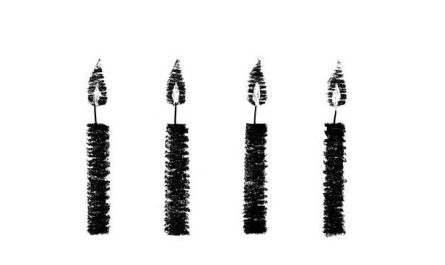![]()
![]()
Der Komponist Johann Wilhelm Mangold ist heutzutage ein eher
unbekannter Name auf den Konzertprogrammen. Seinerzeit war er jedoch
eine wohl etablierte Persönlichkeit der deutschen Musiklandschaft.
Mangold war Darmstädter und wurde 1796 in eine Musikerfamilie hineingeboren.
Als Violinist wurde er Mitglied der Hofkapelle und brachte es
später, wie schon sein Vater Georg, bis zum Hofkapellmeister.
Bruder Carl Ludwig Amadeus, auch Carl Armand genannt, gelangte
ebenfalls als Komponist zu einiger Bekanntheit.
Mangold komponierte neben einigen Opern, Schauspiel- und Festmusiken
auch eine Menge Kammermusik, welche gelegentlich auch das
Waldhorn mit solistischen Aufgaben betraut. Auch wenn es seinerzeit schon
Ventilhörner gab, und in den Partituren keine Anmerkungen dazu zu finden sind, hatte Mangold diese Hornpartieen ganz offensichlich für das Naturhorn vorgesehen.
Solche Stücke, vermutlich als Salonmusik gedacht, geben uns heute interessante und wertvolle Einblicke in die damalige Musikwelt und die Behandung des Hornes im frühen 19. Jahrhundert.
Stilistisch liegt Mangolds Musik zwischen Schubert und Weber. Auch Meyerebeer’sche Anklänge sind zu erkennen. Er schrieb melodisch, geradlinig und harmonisch konventionell aber interessant. Satz und Basslinie sind sehr sauber ausgearbeitet.
Edition Maulwurf startet zunächst mit diesen beiden Kompositionen
J.W. Mangolds:
–Serenada für 4 Hörner und Fagott (1845)
–9 Stücke für Horn und Pianoforte (um 1854)
Hiervon können beim Blechbläsersortiment Köbl auch Druckausgaben erworben werden.
Demo-Aufnahmen und weitere Stücke, auch von Carl Armand, werden nach und nach folgen. Es lohnt sich also, immer mal wieder hereinzuschauen…
![]()
![]()
Today, the german composer Johann Wilhelm Mangold is one of the less common names. Back in his time, he was a well established member of the musical landscape.
Native to the city Darmstadt, Mangold was born into a family of rich musicial
tradition in 1796.
He joined the Hofkapelle as a violinist and raised, like his father Georg, to the
rank of Hofkapellmeister. Brother Carl Ludwig Amadeus, also known as Carl Armand, gained certain fame as a composer as well.
Aside from some operas, festive- and incidental musics, Mangold composed lots of chamber music, some of wich feature the horn as a solistic instrument.
These horn parts, even with valve horns in existance, and no particular mentioning within the scores, are obviously written for natural horn.
This kind of music, probably ment to be performed in musical salons, provides us with interesting and valuable insides of the early 19th century music and the usage of the horn.
Mangold’s compositions lie in style beetween Schubert and Weber. Some references to Meyerbeer can also be recognised. His music can be described as melodic, with conventional, though interesting harmonics.
Bass line and musical structures are worked out very well.
Edition Maulwurf starts with the following two compositios by J.W. Mangold:
–Serenada for 4 horns and bassoon (1845)
–9 pieces for horn and pianoforte (~ 1854)
Printed versions can be bought at Blechbläsersortiment Köbl.
Audio samples and more music, also by Carl Armand, will be following soon.



